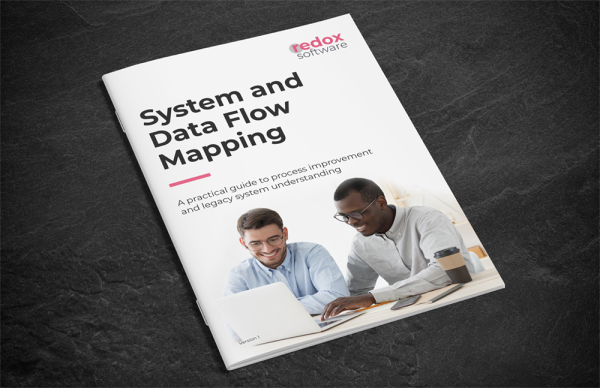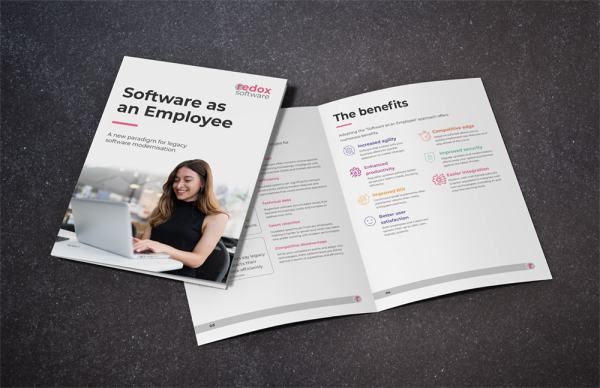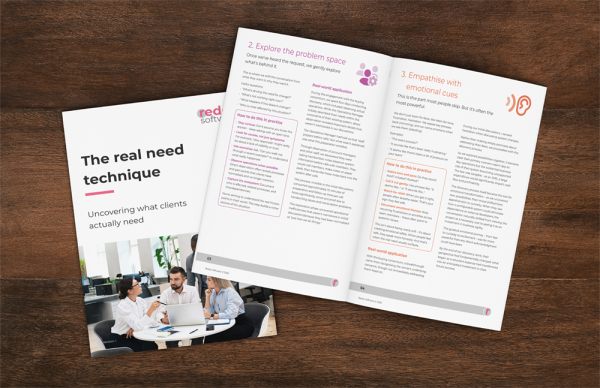Product Manager’s Guide to Legacy Software Issues.
About the guide
To successfully plan modernisation strategies, product managers need a clear understanding of a client’s technology landscape—not just in isolation, but within the context of the wider market. Legacy issues aren’t always about outdated software; even newer systems can have underlying challenges that need to be addressed.
This guide provides a practical framework to help you identify and categorise legacy issues during client engagements, ensuring you make informed, strategic decisions.
What you’ll learn
- How to have informed conversations with clients about their current technology stack
- Ways to uncover underlying issues that clients may not even be aware of
- Strategies for developing targeted modernisation proposals that address root causes
- How to create realistic, value-driven roadmaps for sustainable modernisation

System and Data Flow Mapping – A practical guide to process improvement and legacy system understanding eBook.

About the eBook
As businesses evolve, so do their systems—and without a clear understanding of how they truly work, inefficiencies can go unnoticed. System and Data Flow Mapping (SDFM) provides a structured approach to visualising how legacy systems interact, identifying bottlenecks, and uncovering opportunities for improvement.
This guide walks you through a step-by-step methodology to assess existing processes, streamline operations, and make data-driven decisions that drive measurable value. Whether you’re an IT leader, department head, or business owner, SDFM helps you balance immediate operational needs with long-term transformation goals.
What you’ll learn
- How to map system and data flows to uncover inefficiencies and risks
- Ways to identify and prioritise quick wins for immediate improvements
- Techniques for reducing operational complexity and improving agility
- How to align modernisation efforts with long-term business objectives
- Steps to turn fragmented data and systems into a cohesive strategy
Software as an Employee – a new paradigm for legacy software modernisation eBook.
About the guide
In today’s fast-moving digital world, legacy software can feel like a burden—but what if it could become your greatest asset? Many businesses struggle with outdated systems, yet replacing them isn’t always the best solution. Instead, rethinking how you manage and modernise them can unlock new potential.
This eBook introduces the “Software as an Employee” paradigm—an innovative approach to treating your bespoke legacy systems as adaptable, evolving members of your team. By shifting your perspective, you can turn ageing software into a dynamic force that drives business success.
What you’ll learn
- Why traditional approaches to legacy modernisation often fall short
- How to manage and evolve your software as if it were a key team member
- Practical steps to transform outdated systems into valuable business assets

The real need technique.

About the eBook
In any business conversation – whether in sales, consulting, project delivery or internal work – people rarely express their true underlying needs straight away. Instead, they speak in terms of the solutions they believe will help: “We need a new system”, “We want to automate this”, or “Our team needs training”. But beneath these requests lies something deeper: the real drivers, motivations and problems that need solving. This framework helps uncover those layers, creating clarity and alignment that improves outcomes for everyone involved.
What makes this approach so powerful is its versatility. It can be applied in a brief sales meeting, a multi-week discovery phase or a post-project review. Whether you’re a customer success manager, business analyst, project lead, consultant or sales professional, the six-step technique adapts to your context and scale. It’s not a rigid checklist – it’s a proven, conversational flow shaped by real-world experience across industries, designed to surface insights and create meaningful, strategic impact.
What you’ll learn
- How to uncover the deeper needs behind surface-level requests
- Why the six-step framework works across roles, industries, and project sizes
- Real-world examples of how this approach creates competitive advantage and lasting improvement